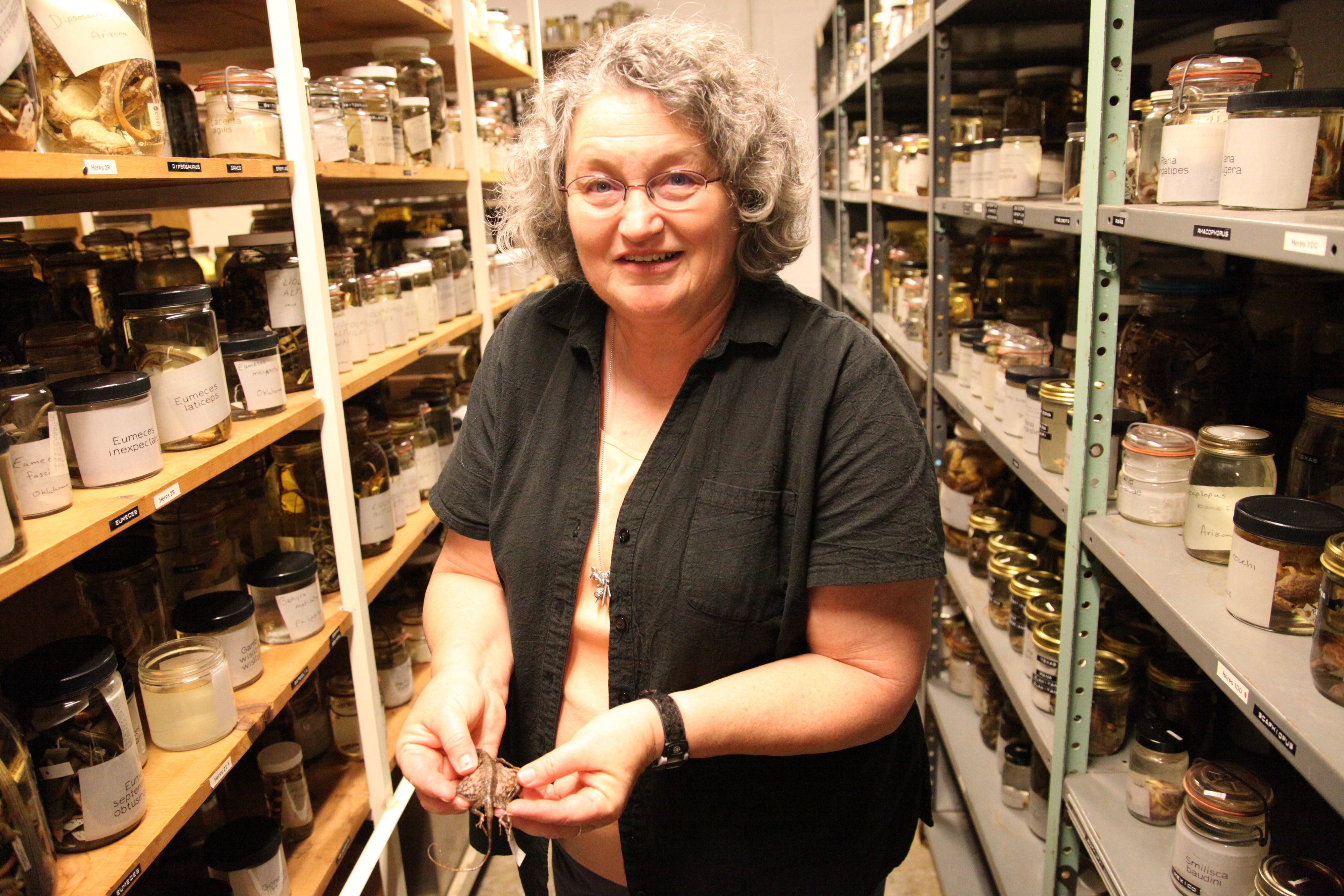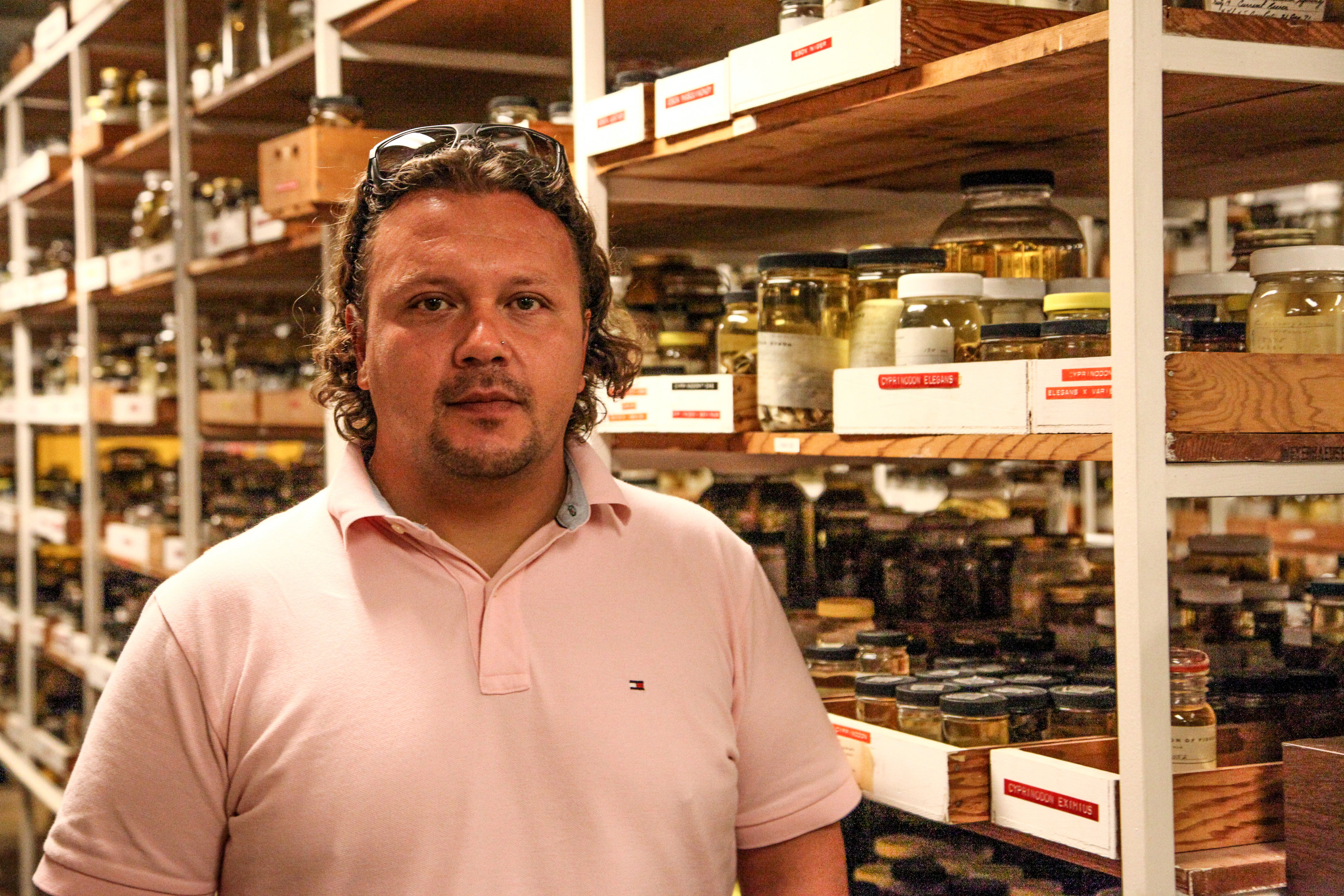The Oklahoma State University Department of Integrative Biology recently received a $422,000 National Science Foundation grant to use toward renovations for the department’s Collection of Vertebrates (COV) natural history museum.
In 2010, the department updated the facilities housing the COV’s mammal specimens. With this latest grant, it can now update the facilities housing the fish, amphibian and reptile specimens.
 Over the next two years, Dr. Karen McBee, an OSU integrative biology professor and curator of vertebrates, will oversee the renovations.
Over the next two years, Dr. Karen McBee, an OSU integrative biology professor and curator of vertebrates, will oversee the renovations.
“The collection of vertebrates has been around since the 1930s,” McBee says. “It began primarily as a private collection from professors and was used for teaching purposes. Now we use it for teaching, research and community outreach, so we needed a better environment to store this collection.”
The department’s budget allows for basic maintenance of the COV, but the recent grants provided the first large influx of money for the department to implement more extensive maintenance and renovations. Plans for this renovation include replacing the current wooden shelves with a new, motorized track system with high-density storage units.
McBee will have help from two retired faculty members who still conduct research with the Integrative Biology department. Drs. Tony Echele, and Stanley Fox, Curators Emeriti of the fish collection and of the amphibian and reptile collection, respectively, are co-principal investigators on the grant.
Fox notes that the grant also allows the department to hire a post-doctoral staff member who will oversee completion of a digital database with geographic information for all specimens, which previously had been done mostly by student volunteers and the curators as time allowed.
The COV operates as more of an academic museum than as a public museum. With more than 600,000 species, many of its specimens are loaned for research worldwide. For example, the COV houses one of the world’s best collections of Nepalese fish specimens, many of which cannot be found alive today.
An Oklahoma company will bring in and install the new storage units; however, McBee points out that much of the hard work of moving, organizing and rearranging the specimens will be done by a handful of integrative biology students hired for the tasks. This will give them invaluable experience for their future careers.
 Enrique Santoyo-Brito, an Integrative Biology graduate student, is the manager of the COV’s fish, amphibian and reptile collection. He is excited for all the upcoming changes and the opportunities it will provide to the academic and public communities.
Enrique Santoyo-Brito, an Integrative Biology graduate student, is the manager of the COV’s fish, amphibian and reptile collection. He is excited for all the upcoming changes and the opportunities it will provide to the academic and public communities.
“I look at our collection like a library, but instead of books, we have tons of specimens,” Santoyo-Brito says. “If ‘read’ correctly, the amount of information you can get from our collection is endless. We hope to preserve that information for years to come.”
About
The mission of the OSU Collection of Vertebrates is to house collections as documentation of the vertebrate history and biodiversity of Oklahoma, the United States and regions of the world where OSU faculty and students conduct research.
Long-term conservation of the collection will ensure it is available for educational, research and outreach purposes. For more information, please visit the Integrative Biology department website at www.integrativebiology.okstate.edu.
